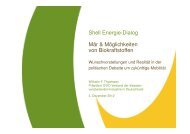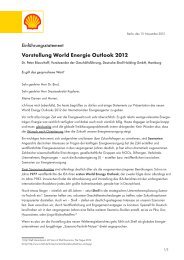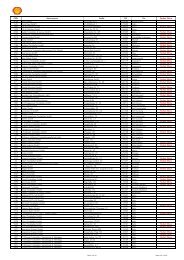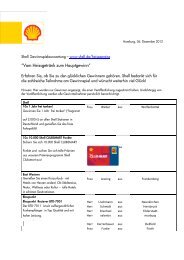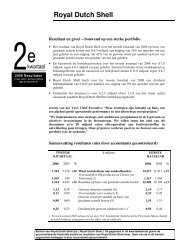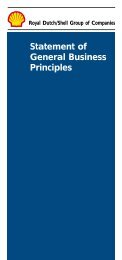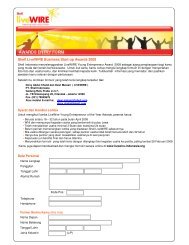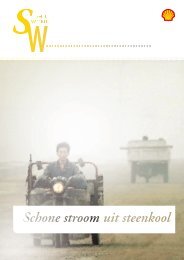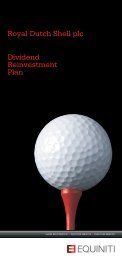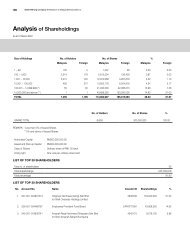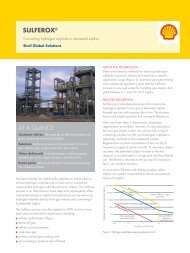ENVIRONMENTAL STATEMENT BARDOLINO DEVELOPMENT
ENVIRONMENTAL STATEMENT BARDOLINO DEVELOPMENT
ENVIRONMENTAL STATEMENT BARDOLINO DEVELOPMENT
Create successful ePaper yourself
Turn your PDF publications into a flip-book with our unique Google optimized e-Paper software.
Bardolino Development Environmental Statement<br />
The most important factor currently affecting seabird numbers is probably the quality and<br />
abundance of prey. Pollution of the sea by oil, predominantly from merchant shipping, can be<br />
a major cause of localised seabird mortality. Although locally important numbers of birds<br />
have been killed directly by oil spills, such spills have primarily been associated with the<br />
transportation of oil, and little or no direct mortality of seabirds has been attributed to<br />
exploration and production activities.<br />
In general, offshore areas of the North Sea contain peak numbers of seabirds following the<br />
breeding season and through winter, with birds tending to forage closer to coastal breeding<br />
colonies in spring and early summer (DTI, 2001).<br />
Of the species commonly present offshore in the North Sea, gannet, skuas and auk species<br />
(guillemot, razorbill and puffin) may be considered to be most vulnerable to oil pollution due to<br />
a combination of heavy reliance on the marine environment, low breeding output with a long<br />
period of immaturity before breeding, and the regional presence of a large percentage of the<br />
biogeographic population.<br />
Species commonly found in the offshore waters, including the proposed development area,<br />
are the fulmar, gannet, guillemot, razorbill, and kittiwake, and herring, great black-backed and<br />
lesser black-backed gulls (DTI, 2001). Other species which are recorded at lower levels<br />
include the pomarine skua, Arctic skua, black-headed gull, common gull, common tern, Arctic<br />
tern, black tern, little auk and puffin.<br />
4.5 SOCIO-ECONOMIC ENVIRONMENT<br />
4.5.1 Commercial fishing industry<br />
An assessment of the fishing industry in the proposed development area has been derived<br />
from International Council for the Exploration of the Seas (ICES) fisheries statistics, provided<br />
by the Scottish Executive Environment and Rural Affairs Department (SEERAD). Oil and gas<br />
exploration and production operations have the potential to interfere with fishing activities, for<br />
example as a result of the exclusion of fishing vessels from around subsea wellheads, the<br />
area adjacent to platforms, and associated structures which require protection (CEFAS,<br />
2001b). It is therefore important to have an understanding of the fishing intensity in the<br />
development area in order to evaluate the potential impacts associated with the proposed<br />
activities on the fishing industry.<br />
For management purposes, ICES collates fisheries information for individual rectangles<br />
measuring 30nm by 30nm. Data have been obtained for ICES rectangles 44F1 and 43F1,<br />
which coincide with the proposed development area. Statistical data from the ICES<br />
rectangles provides information on the UK fishing effort and live weight of demersal, pelagic<br />
and shellfish caught by all UK vessels between 2002 and 2006 (SEERAD, 2006a and 2008a).<br />
Data on the economic value of the fishing industry in this area have been produced based on<br />
UK catches and landings (SEERAD, 2008b).<br />
The overall value of the different species by area (financial yield per ICES square) is an<br />
indication of the differential worth of areas and is used as a method of expressing commercial<br />
sensitivity (Coull et al., 1998).<br />
The type of fishing gear and techniques employed by fishermen depends on a variety of<br />
factors, such as:<br />
• species fished, whether these are demersal, pelagic or shellfish;<br />
• depth of water and seabed topography; and<br />
• seabed characteristics.<br />
Species found in the water column (pelagic species) are fished using techniques that do not<br />
interact with the seabed, whereas demersal and shellfish species are generally fished on or<br />
near the seabed and there is therefore the potential for these gears to interact with structures<br />
placed on the seabed.<br />
April 2008 Page 4-31


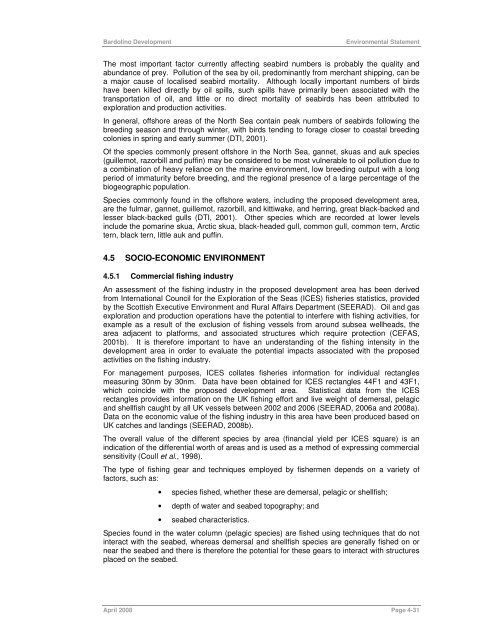
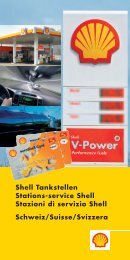
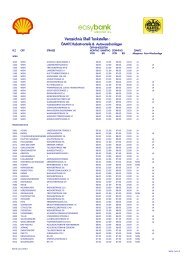
![Download Shell AutoGas Stationen [Stand: Januar 2013] (PDF](https://img.yumpu.com/9982753/1/190x245/download-shell-autogas-stationen-stand-januar-2013-pdf.jpg?quality=85)
